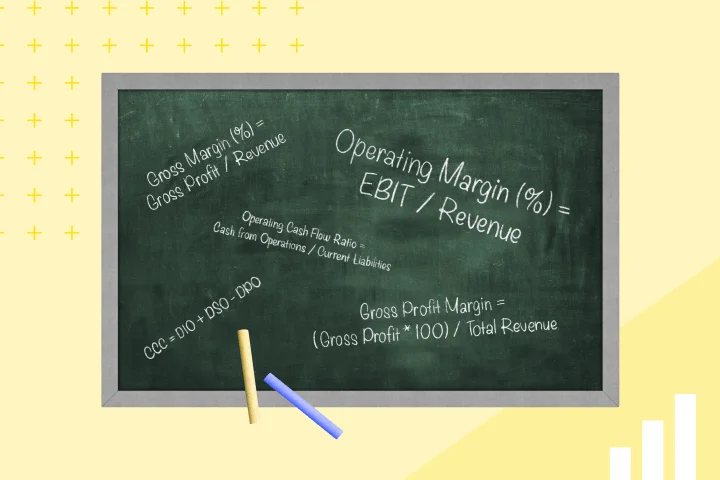Businesses are playing catch-up in the world of digital payments when it comes to B2B payments. Whereas commercial payments have almost entirely moved to electronic transfers, many businesses are still reliant on the good old-fashioned paper check for their daily B2B payments. However, a wave of automation in the realm of digital payments has caused a gradual shift in the way businesses are going about their B2B payments.
Simply put, B2B payments are the exchange of currency for goods or services between two businesses. Typically, B2B payments are used for media buying, eCommerce, and SaaS assurances. Any time one business invoices another, it is considered a business to business transaction.
The Most Popular Types of B2B Payments
ACH
ACH (Automated Clearing House) is one of the simpler ways to make B2B payments. Using just routing and bank account numbers, funds are transferred electronically from one entity to another. The amount is pulled from the business buying the service/good and deposited into the seller’s bank account.
Many businesses use ACH as it is fast, efficient, and secure. Talking of speed, these payments are processed much faster than their paper counterparts. Additionally, ACH payments are easy to monitor. Cash flows appear at the end of each month’s bank statements, making it simple to track cash flows and account settlements.
ACH is for American businesses, and can only be used within the US. One of the drawbacks of ACH is that payments are collected at set points during the day, which can cause delays in processing your transaction. This means that if your payment is made after the last cut-off time of that business day, it will not be processed until the following day.
Paper Checks
The oldest and most outdated method of B2B payments is the paper check. As technological advancements sweep across the business world the number of business payments made via checks has rapidly declined. Yet, many businesses still use the modest check as a means of payment as they value the security that comes with it over the speed of the payment, which doesn’t.
Checks leave an audit trail when deposited, meaning a business can easily track its cash flow and inventory. Additionally, checks leave behind a real paper trail whilst being processed, adding an extra level of security for the company. They also add benefits in security and fraud protection, along with traceability.
However, there are two major reasons explaining the move away from the humble check. Firstly, processing times are long and can take weeks, if not months until the transaction is complete. In a fast-moving business, the check simply does not offer the efficiency most modern companies are looking for. Secondly, human errors such as miswriting the name of a beneficiary whilst composing the check can cause it to bounce leading to consequences such as having to rewrite a check and missed deadlines.
Credit Cards
Credit cards are a durable means of payment. They provide quick, convenient purchasing power that that almost ensures payments accepted as they are made. Card payments can be tracked at the end of a month both digitally and printed.
There are a couple of drawbacks to credit cards. As with many items in the workplace things are easily lost and cancelling a card can have long-run effects, slowing down a business’s performance whilst replacing the card. Additionally, if credit cards are not treated as debit cards, you may endure extra fees if not paid on time. Not to mention the incredibly high fees some providers take for their service.
Wire Transfers
Need to send an instant payment? Need to send an instant payment? Then perhaps wire transfers are the best B2B payments method for you. This form of digital payment is typically used for eCommerce and other various digital transactions.
The major benefit of wire transfers is that when the funds hit the receiving account, they are available for instant use. Furthermore, unlike ACH, wire transfers can be made at any time of the day and are not reliant on cut-off times. And more often than not, wire transfers do not have a limit on the amount of currency a business can send.
However, as with most payment services, wire transfers do have their disadvantages. They can be tricky to set up and are non-reversible.
Digital Payment Platforms
Fintech brands offering payment solutions for B2B transactions are the new trend. There are some familiar, and not-so-familiar companies that are taking over the payments market:
– PayPal
– TransferWise
– Monzo
– Mesh Payments
– Google Pay.
Via ACH or wire transfers, businesses can send or receive payments with extra benefits such as to organize, assure, and control their commercial and SaaS service payments. Many companies do not draw funds from a bank account, but rather from funds deposited within the digital payment provider.
Top 3 Reasons to Use a Payment Software Provider
1. Security – B2B payment providers often have levels of security built-in that watch over and protect your data at all times. Although not impervious to fraud attempts, making an online payment through a provider offers a clear trail of transactions that can easily be analyzed to see if your account/payments have been infiltrated.
2. Save Time and Labor – AI will save you the time of manually processing payments, which can save you time and resources. Employees can focus on their tasks at hand, rather than manually entering information to make a payment. Transactions are processed and received faster than cash or check allowing you more time to devote elsewhere in the business
3. Improve Cash Flow – Especially for small and new businesses, cash flow can be a major concern. Using B2B can help identify cash flow patterns that simplify decision-making on whether to spend or save. Additionally, clear and concise spending reports enable businesses to follow up with clients, helping to build and maintain healthy relationships. Also, requesting payments is simpler, as at the click of a button you can send an invoice and receive the payment faster.
What to Consider When Searching for a B2B Payment Provider
One choosing a payment provider, it is essential to do some research on the reliability of the platform. When making crucial payments you need to be sure the platform will be able to deliver time-after-time. Have a look and see which companies use the platform and check out any reviews you can find online.
Another factor to bear in mind is the cost & fees the provider charges for their service. Some fees may sneak up on you, like transaction fees, and other providers may charge a monthly subscription for their service. There are many free providers out there with no hidden costs, so best to look around before taking the plunge.
Integration. There is nothing more frustrating than having to use multiple systems to complete one task. Many of today’s payment solutions come equipped with common accounting tools, or the ability to automatically export to accounting software. Whatever you chose, make sure the provider paints a clearer picture of your finances.
You shouldn’t have to worry about the headache that comes when completing simple tasks. Look for a platform that offers simplicity. The aim of a B2B payment solution is to make your life easier, whether that is making, managing, or searching for transactions.
Understand what you want to gain from your payment provider. Depending on your specific utility find a platform that allows you to achieve your goals. Not all platforms offer the same features, and many have restrictions. For example, if you need to make cross border payments, make sure the provider is compatible with international payments.
-
Get the latest blogs from Mesh by subscribing to our newsletter







